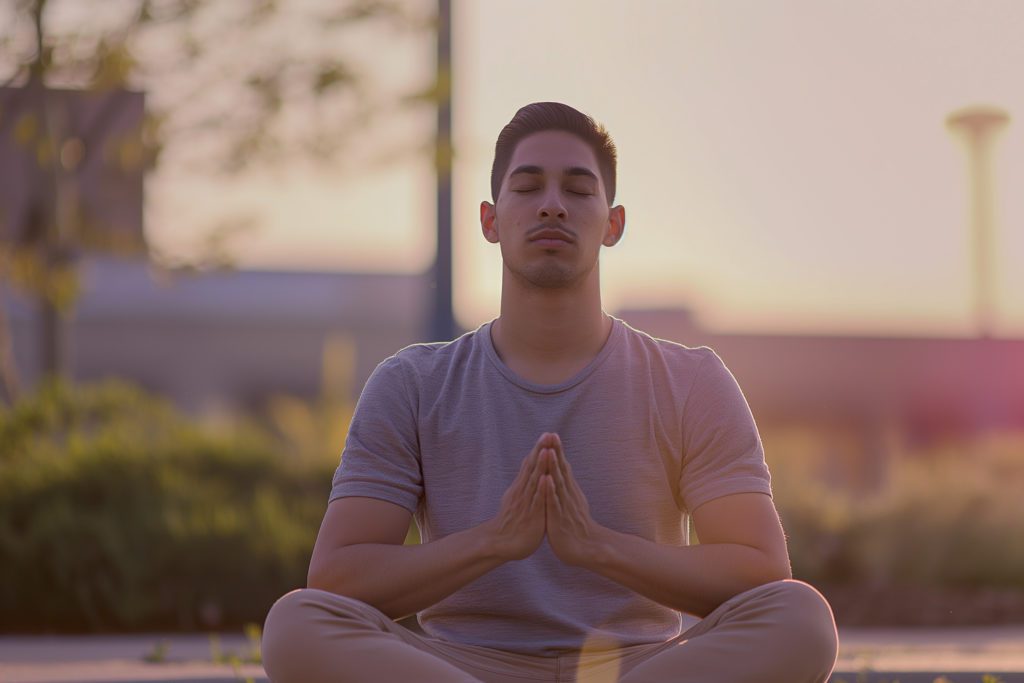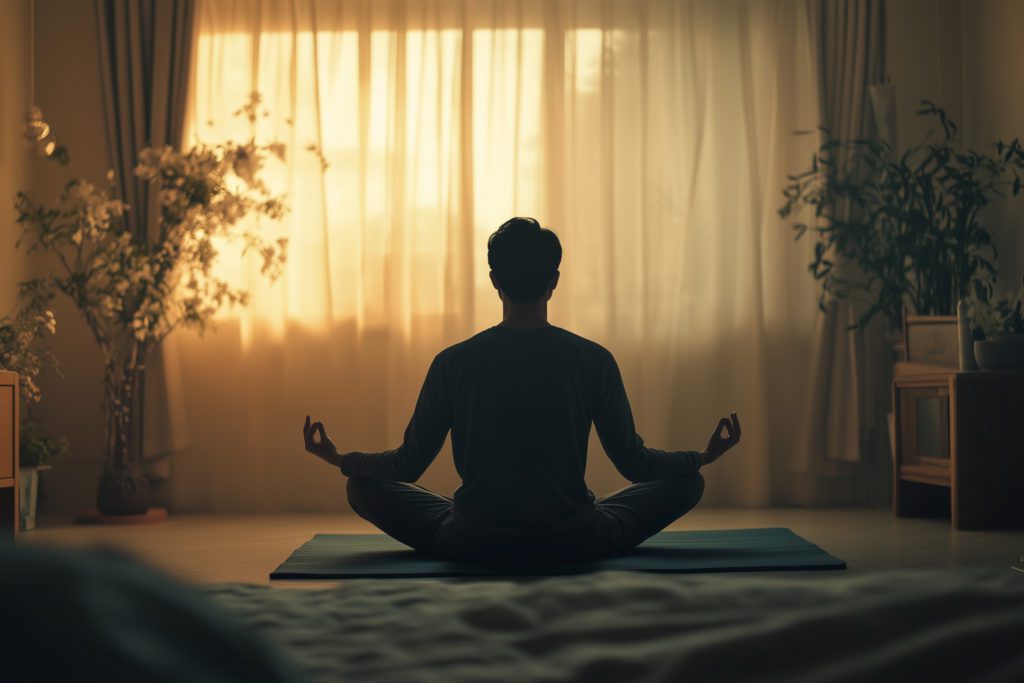
The Science of Calm: How Box Breathing Affects Your Brain and Body
Box breathing is a simple, powerful technique to reduce stress and help you fall asleep. Learn how to use box breathing in your sleep routine tonight.

Whether you're struggling to fall asleep quicker or looking for new activities to add to your evening routine, breathing exercises can help clear your mind so you can relax at the end of the day. Box breathing is one specific type of activity that might be the key to ease you into a better night's sleep.
What Is Box Breathing?
This simple yet powerful technique brings mindfulness to your breathing pattern and induces a deep state of relaxation. As you focus on your breath throughout the process, your body and mind slow down, lulling you into a heightened sense of calmness. While practicing box breathing, you divide each beath into four parts. To make this process easier, some people visualize breathing along four corners of a square or box. By using breathwork on a regular basis, you can experience a greater sense of emotional and physical well-being and may be better able to manage your stress and anxiety.
Most people don't think about how they breathe, but there are actually four separate parts to each breath you take:
- Inhaling
- Pausing for some time at the top
- Exhaling
- Pausing for some time at the bottom
Most people vary the amount of time they remain at any given step. However, when you perform box breathing exercises, every component has equal timing. This pattern is widely used in yoga and meditation and has gained popularity among those looking for an all-natural way to relieve stress and promote relaxation.
Another closely related form of box breathing is tactical breathing, which is useful for law enforcement, military personnel and others who are routinely put into stressful situations and must quickly regulate their nervous systems. This form of breathing can enhance physical and cognitive performance on the battlefield and reduce stress levels.
The Benefits of Box Breathing
Box breathing is easy to learn, which is why it's so effective in many situations. Whether you need to re-center yourself, improve concentration or feel calmer throughout the day, box breathing provides numerous benefits, including:
- Reduces stress and panic - Slow breathing techniques, like box breathing, activate your parasympathetic nervous system, allowing you to regain control of your emotions and feel calmer. But, this is something that you have to practice on a regular basis, even when you are not anxious. A great way to do this is to incporporate a bedtime yoga and breathing exercise during your relaxing wind-down routine.
- Alleviates insomnia - If you struggle to fall asleep, focusing on your breathing pattern can help you quiet anxious thoughts and relax enough to drift off.
- Controls hyperventilation - By instructing your lungs to breathe slowly and rhythmically, you can change rapid breathing patterns associated with anxiety and panic.
- Helps you refocus - Focusing on each component of box breathing can clear your mind and improve your ability to focus, making this technique especially helpful on chaotic work days.
- Decreases blood pressure - Breathing exercises like box breathing stimulates the vagus nerve, reducing heart rate and lowering blood pressure.
- Reduces cortisol - Studies note a significant decrease in cortisol levels in those who practice breathing exercises, which also makes them an effective relaxation strategy.
Integrating this simple technique into your daily routine can help you relax when life becomes stressful. Not only is box breathing easy to learn, but it is a natural and effective way to achieve a calmer state of mind in a short amount of time.
Can Box Breathing Improve My Sleep?
Breathwork exercises, including box breathing, can generally benefit sleep. When you practice focused and intentional breathing, your stress and anxiety decrease and you feel more relaxed. As you relax, your nervous system calms, making it easier to achieve a restful state and fall asleep.
Additionally, intentional breathing exercises can ensure a full oxygen exchange with each breath, which slows your heart rate, decreases blood pressure and lowers your psychological and physiological stress levels. For maximum sleep benefits, you can pair box breathing with other relaxation techniques, like progressive muscle relaxation.
How To Practice Box Breathing
The key to box breathing is to achieve equal timing for all four parts of each breath. While you can practice however you feel most comfortable, lying down is preferable if your goal is to fall asleep. When you lie down, your body doesn't have to exert energy to stabilize your muscles and support your body, so you can fully focus on breathing mechanics.
When you're ready, lie on your bed and gently place one hand on your stomach while the other lies on your chest. First, breathe normally and pay attention as your body rises and falls. Gradually slow down your breathing while ensuring you can still feel your stomach and chest rising so you know you're inhaling and exhaling deeply enough.
When you're ready to begin, take these steps:
- Slowly inhale evenly and count to four as you do so, continuing to pay attention as your stomach and chest rise.
- At the top of your inhalation, hold your breath there for four seconds.
- Then, slowly exhale for a count of four.
- At the top of your exhale, hold your breath for four seconds.
- Continue this breathing pattern until you feel your mind and body calm down.
Keeping this pattern at four-second intervals is not a hard rule. As you get better at box breathing, you can extend this pattern up to five or six seconds if you'd like. Beginners should start slowly, practicing for a few minutes over several days before increasing their sessions.
You can use box breathing as often as you'd like throughout the day to manage anxiety or stress or use it as one step in your nightly sleep hygiene routine to help you fall asleep faster. If you've always found it difficult to turn off and continuously toss and turn throughout the night, box breathing may be your long-awaited ticket to dreamland.

Written by
Emily Mendez
Emily Mendez is a former therapist and mental health author. She is one of the leading voices in mental health. Emily's writing has appeared in eCounseling, SonderMind, and more. Emily is frequently interviewed by Healthline, Fatherly, INSIDER, Family Circle, and other national media for her advice and expert opinion on the latest mental health topics.
Download Pillow
Get help
Press & News
Legal
Connect
X (Twitter)
Company
Copyright © Neybox Digital Ltd.



